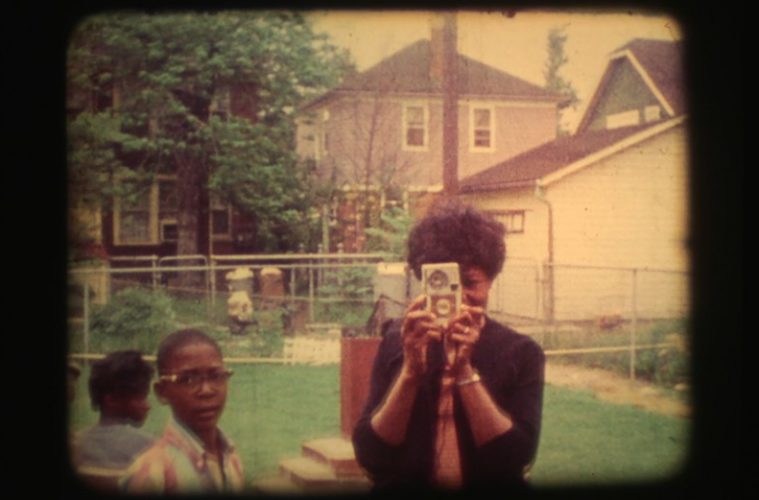Produced collaboratively by the Detroit Free Press and community institutions, 12th and Clairmount is a rare immersive look at Detroit during the unrest of 1967, the same time period chronicled through the lens of the Algers Hotel massacre in Kathryn Bigelow’s horrific Detroit. Directed by Brian Kaufman with the assistance of longtime beat reporters, the film tells the story of common Detroit residents of color as the city experiences white flight to the suburbs. Kaufman chooses to tell the story through 400 reels of 16mm home movie footage donated by families, news footage, newspaper clippings, voice-over, and crude drawings. The drawings, which look as if they were provided by the paper’s courtroom sketch artist, don’t create as polished a portrait as a film like Keith Maitland’s Tower.
12th and Clairmount, despite its name, isn’t focused on a single event. Rather it’s a commemorative film in which many of the city’s great institutions, including the Free Press and Detroit Art Institute, reflect on what happened and how the city got to where it is today through failed policies, bad decisions, and politics. The city turns into a war-zone with little accountability. As one white voice recalls, “This wasn’t America.”

While larger racial rebellions and riots (depending on who is recording the history) are referenced in passing, 12th and Clairmount is largely Detroit-focused and the star of the film is the evocative home video and news footage with raw accounts of a city under siege. Recalling Jason Osder’s masterpiece Let the Fire Burn, told through news footage about a 1985 stand-off in Philadelphia which lead to the burning on an entire city block, 12th and Clairmount turns to unintentional citizen journalists who head to the effected blocks with a morbid curiosity.
One story is essentially weaved together through multiple narrators who are never identified, apart from profession and occasionally race. I n one of the film’s most disturbing passages a black police officer speaks of his treatment by white officers. The police force proved to be part of the problem, along with Governor George Romey’s binary “law and order” view that permitted police and National Guard members to shoot first and face no consequences later. Thankfully a request to send the army in was denied by the federal government.

12th and Clairmount is an evocative history lesson, although a bit less polished than documentaries made outside of organization with institutional memory. It’s a series of smaller, well-reported stories rather than a documentary with a single climax. Kaufman and his colleagues present a regional story without giving a larger political picture of what is to come. Then again, Detroit’s story is the story of many once thriving industrial cities plagued by decades of poor choices and segregation.
12th and Clairmount screened at DOC NYC.

